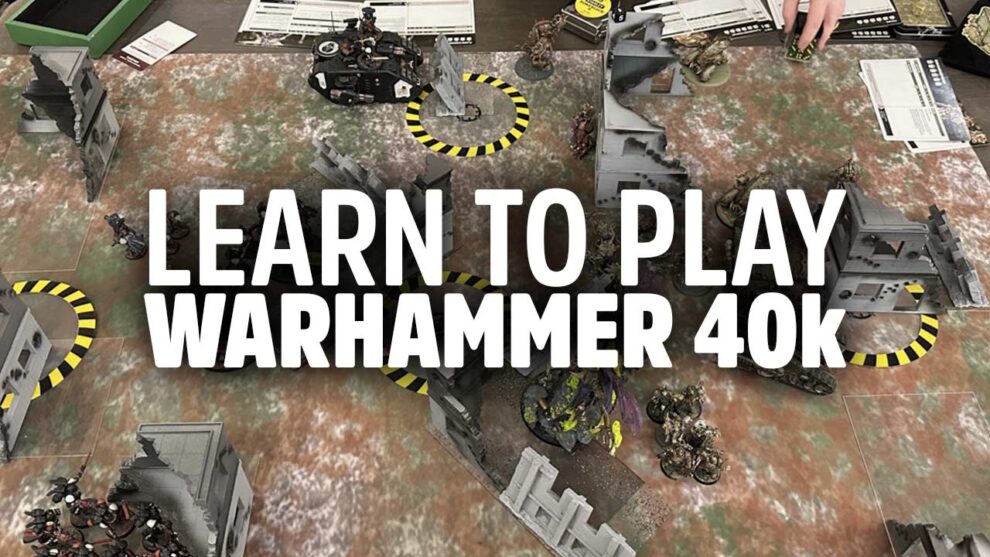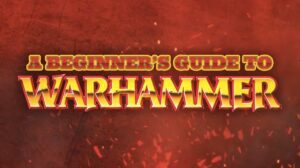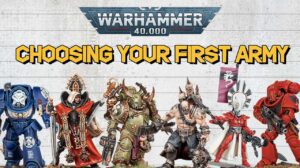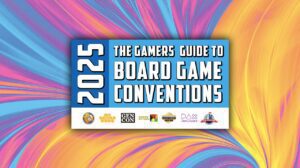Tabletop wargaming is a hobby that blends strategy, creativity, and storytelling into one unforgettable experience. Unlike video games, it’s played face-to-face on a physical battlefield—a tabletop covered in terrain, where players command painted armies of miniatures to fight for dominance. Among all the tabletop wargames out there, Warhammer 40,000 (often called Warhammer 40K) stands as the most iconic and popular. It’s a sprawling universe filled with towering Space Marines, monstrous aliens, and ancient gods of war all brought to life through dice rolls, tactics, and imagination.
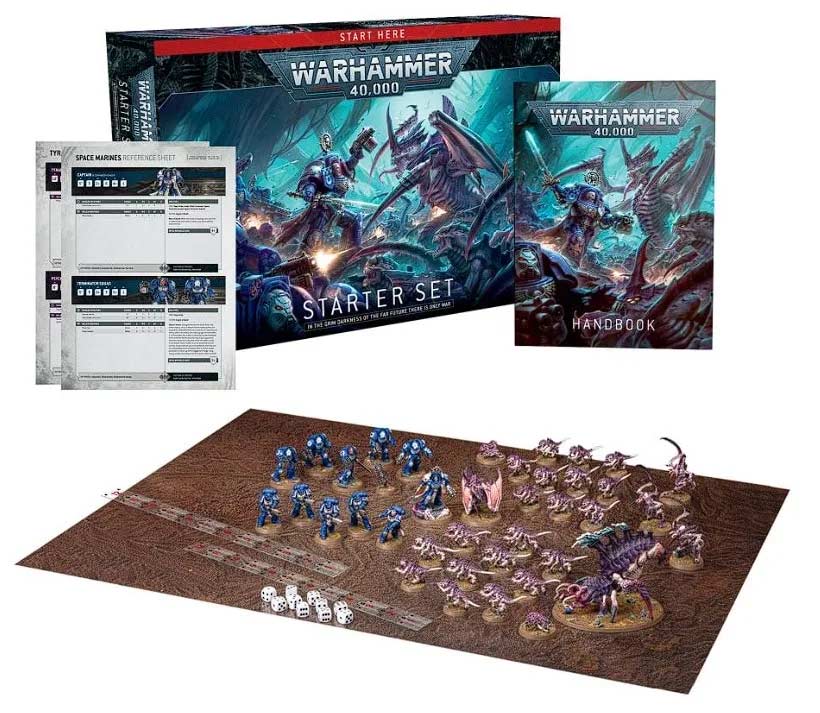
I still remember my first encounter with Warhammer 40K. Walking past my local Warhammer store, I discovered a window filled with intricately painted miniature armies, and I had to go in and understand what it was all about. Inside I saw miniature soldiers clashing across a detailed battlefield, with players commanding their forces, rolling dice, and thinking deeply about their next move, all to determine the winner of the battle. It wasn’t just a game, it was a mix of art, storytelling, and strategy that pulled me in completely. Before long, I was building my first army, learning the rules, and discovering how deep and rewarding this hobby could be.
If you’re new to Warhammer 40K, the hobby and specifically the game rules might seem daunting at first. There are dice, models, tape measures, and a galaxy’s worth of rules to learn. But at its heart, every game follows a simple structure: each turn unfolds through a series of phases that represent the rhythm of battle. Once you understand these phases, the game starts to flow, and the strategy and fun begin!
In this article, I hope to provide a basic walkthrough of the phases of play in Warhammer 40,000: 10th Edition — from issuing commands and moving your troops to unleashing volleys of fire and clashing in brutal close combat. There are a few game modes to choose from in Warhammer 40k, Combat Patrol, Strike Force or Narrative to name a few, but the turn sequences made of phases all work the same way. So, whether you’re preparing for your first battle or just curious about how the game works, this guide will give you a clear understanding of what happens when the dice start rolling.
Warhammer 40k streamlines the complex flow of battle into a structured sequence of phases. Most game modes are made up of 5 turns for each player, and each turn is made up of these key phases, designed to represent the ebb and flow of futuristic warfare, from issuing orders to unleashing devastating attacks and seizing objectives. Whether you’re new to the grim darkness of the far future or returning after a few editions, understanding these phases is crucial to mastering the game.
The Turn Structure
A game of Warhammer 40,000 is divided into battle rounds. Each battle round consists of two player turns, one for each player. During your turn, you’ll move, shoot, and fight with your army while your opponent reacts and defends. Once both players have completed their turns, the round ends, and a new one begins.
Each player turn has five main phases:
- Command Phase
- Movement Phase
- Shooting Phase
- Charge Phase
- Fight Phase
Let’s break each one down.
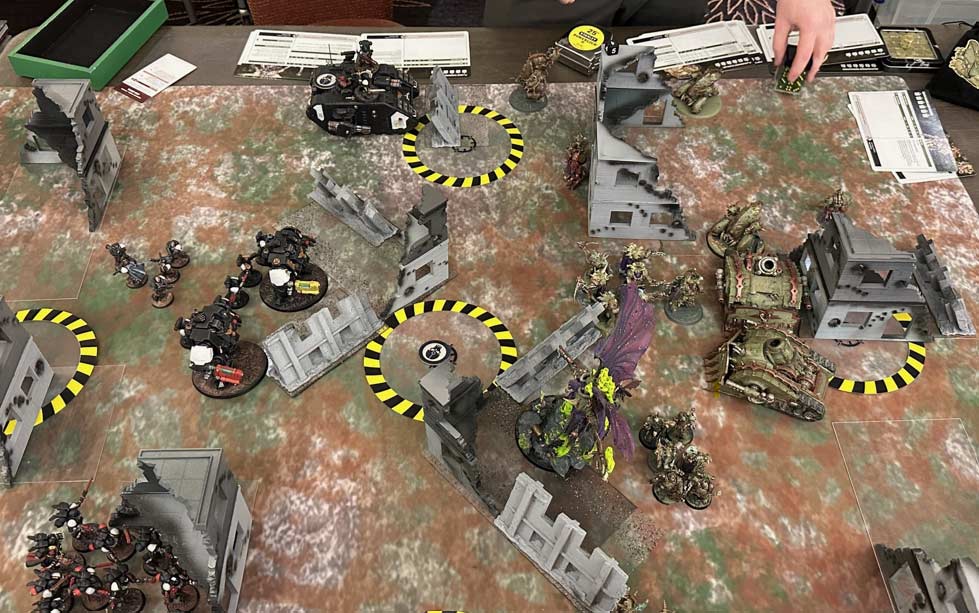
Command Phase
The command phase represents the moment when leaders issue battlefield orders and armies regain focus and morale.
During this phase:
- You gain Command Points (CP): These are the strategic resources you use to activate Stratagems,powerful tactical abilities that can alter the course of the game.
- Command abilities trigger: Some characters, units or armies have special rules that activate in this phase, such as re-roll auras, leadership boosts, or unit buffs.
- Primary mission objective control is assessed: Battle missions are reviewed and scored either through control of primary objectives or defeating enemy units, which scores you victory points (VP).
- Secondary mission cards are drawn: Each turn players draw secondary missions that require units to complete a tactical action to score victory points.
Key tip: Don’t rush this phase! Many important decisions need to be made, and strategically planning out your turn can set you up for a strong round.
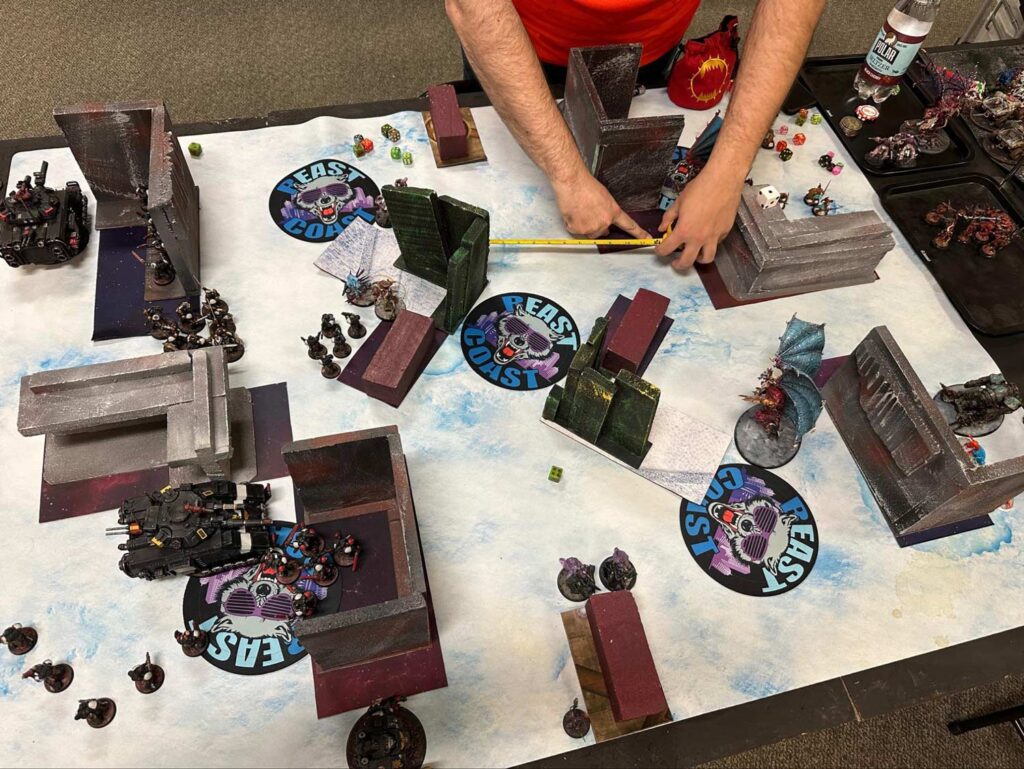
Movement Phase
The movement phase is all about positioning, one of the most critical aspects of Warhammer 40,000. Where your unit’s move determines what they can shoot, charge, or capture.
During this phase:
- Choose which units to move and where. All units have a normal move value, a characteristic which is measured in inches.
- Advance move: An extra move where the player rolls a D6 and adds that result to the movement. However, these advancing units can’t shoot or charge later in the same turn (unless a special rule allows it).
- Fall Back: Units engaged in close combat can fall back, retreating to reposition, though doing so usually means they can’t shoot or charge.
- Sometimes the best move is no move at all, especially for heavy weapon units or to hold or complete objectives.
- Positioning is everything. Cover, line of sight, and distance to objectives all hinge on your movement choices.

Shooting Phase
Now it’s time to unleash firepower. The shooting phase lets your ranged units attack enemy targets within line of sight and weapon range.
During this phase:
- Pick your units to shoot and choose their targets.
- Select targets within range and visibility. Each weapon has a range in inches, and this impacts what each unit can target.
- Resolve attacks by rolling dice:
- To Hit: a check against the ballistic skill characteristic. Example: generally Space Marines are good at shooting and need a roll of 3+ on a d6 to successfully hit a target
- To Wound: a check against the strength of the weapon and the toughness of the target. If strength and toughness are equal a roll of 4+ is required to successfully wound
- Armor Saving Throws: allow a wounded model to check if the armor blocks the wound. Space Marines wear power armor that saves on a 3+ (unmodified)
- If your attacks are successful, you allocate damage and remove the casualties.
- Be aware that many weapons have special rules and levels of damage, Blast, Heavy, Rapid Fire, or Assault, which can change how they perform based on distance or enemy unit size.
Tip: Prioritize your targets. Focus on removing key threats or weakening enemy control of objectives.
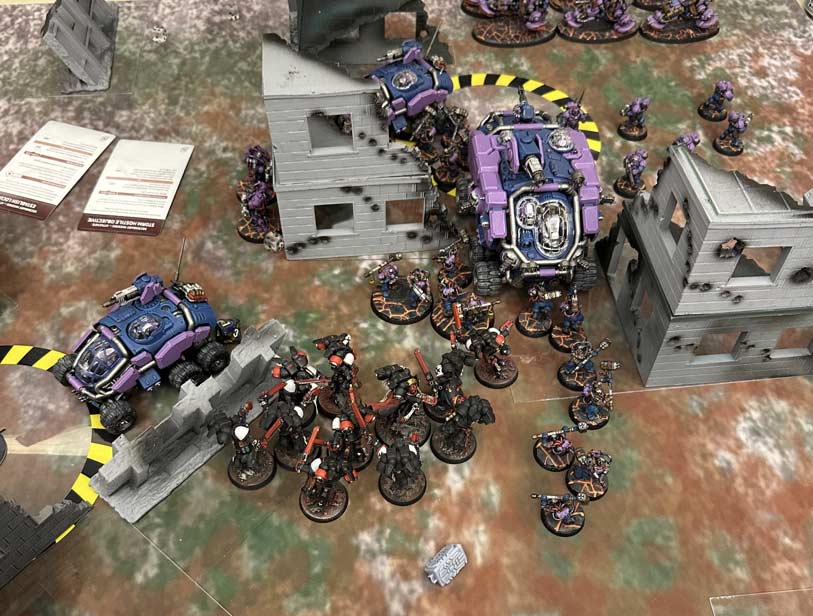
Charge Phase
The charge phase is where the close-combat units make their move. If your melee warriors are itching for a fight, this is their time to shine.
During this phase:
- Choose units to charge. Only those that didn’t Advance or Fall Back earlier can charge (unless a special rule applies).
- Declare your charge target within 12 inches.
- Roll 2D6 to determine how far the unit charges. The sum of these dice is the charge movement range.
- If the target distance is within the charge roll, move the charging unit into base-to-base contact otherwise known as engagement.
Fight Phase
Once units are locked in combat, the fight phase determines who strikes first and how much carnage follows.
In this phase:
- Select a unit to fight (charging units usually go first).
- Pile in and make attacks with melee weapons.
- The charging unit usually acts first to resolve hits, wounds, and saves just like in shooting.
- Once all charging units have had the chance to fight, the enemy has their turn to fight back (if any of them have survived!)
- Consolidate and move slightly after fighting to stay engaged or claim objectives.
The fight phase can be brutal, with casualties piling up fast. Clever positioning and the right Stratagems can swing the momentum dramatically.
After all phases are complete:
- The turn ends and any secondary Victory Point scoring for the active player is resolved.
- Check for any special end-of-turn abilities.
- Then it’s your opponent’s turn to do the same. The cycle continues until the game ends, usually after five battle rounds.
Final Thoughts
Understanding each phase and how they flow into one another is key to becoming an effective commander. Start small and practice with the basics. Ideally with someone who understands the game or at your local hobby store where many helpful players can review the basics with you.
Once you’ve mastered the basics, you’ll find that Warhammer 40,000 isn’t just about rolling dice. It’s a deep strategy game about anticipating your opponent, positioning your forces, and seizing every opportunity in the name of victory.
Bibliography
Game Rules:
Warhammer 40,000 rules
Community Links:
Official Warhammer – Getting Started


